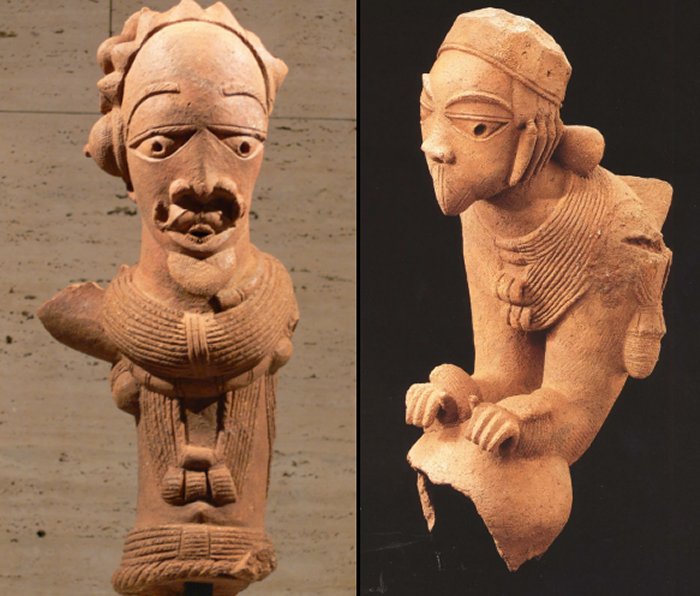Enigmatic Nok Culture: A Sub-Saharan Archaeological Puzzle
A. Sutherland - AncientPages.com - Some 2,500 years ago, a mysterious Nok Culture emerged in Nigeria. It was discovered in 1928, due to tin mining that was happening in the area.
This society 'without writing' - known for their extremely advanced social system - were the earliest producers of life-sized terracotta figures in the Sub-Sahara and iron in smelting furnaces.
The Nok Culture Created Bizarre Terracotta Statues
Mysterious Nok people had many talented sculptors. They left behind bizarre terracotta statues along with broken pots, other storage vessels, a clay lizard and fragments of clay faces with triangular eyes, immense nostrils.
A terracotta head - evidence of the oldest known figurative sculpture south of the Sahara - was unearthed of the first time in 1943, during tin mining in the vicinity of the village of Nok near the Jos Plateau region of Nigeria. Later, similar heads, figures, animals, and pottery shards have been found in a number of Nigerian sites.
A lack of extensive archaeological study significantly limited our understanding of Nok terracottas. One of the earliest African centers of ironworking and terracotta figure production, the Nok culture remains an enigma.
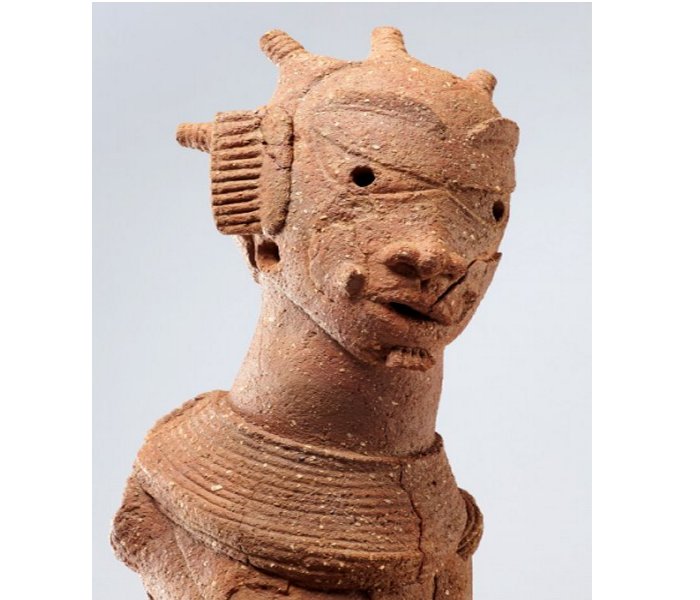
A terracotta piece unearthed from the Daji Gwana site in 2010. It is one of the most complete figures found by the archaeologists of the Goethe University and adorns the cover of the catalog for the exhibition at the Liebieghaus in Frankfurt. Copyright: Peter Breunig
The culture's ancient sites have been regularly researched since 2005, but the study of the Nok Culture has been disturbed by the political situation in the country.
People that had been living a Stone Age-like nomadic existence suddenly settled. Around 500 BC the population of this culture increased, and people who had long lived as nomads during the Stone Age decided to settle.
In their excavations, archaeologists excavated finds such as pottery, stone tools, iron objects, and plant remains, the evaluation of which will provide a comprehensive picture of the Nok Culture.
There are no skeletons preserved in the earth since the acidic soil dissolved all bones. Like their cemeteries, the temples and huts of the Nok have disappeared without a trace. No one knows what their farm animals, streets or religious ceremonies were like. However, archaeological excavations revealed shards of enigmatic, over 2000-year-old clay statues. They were found on rocky slopes, in ancient refuse pits, and in open spaces.
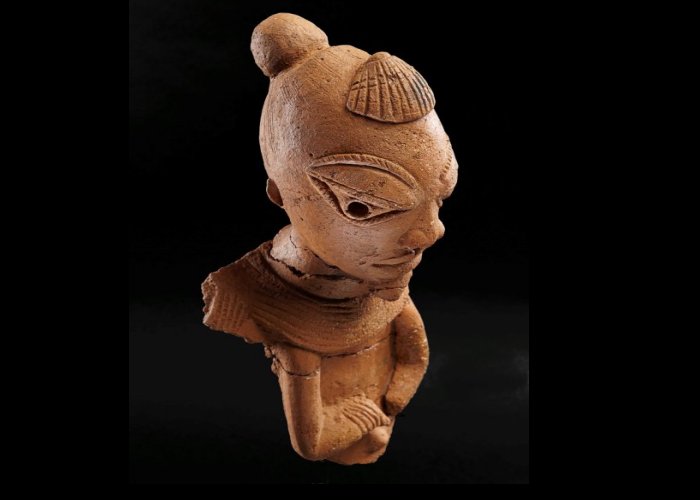
A small terracotta figure of a man, decorated on the forehead with relief in the form of a seashell. Discovered in 2012 at the Pangwari site. Copyright: Peter Breunig
The largest of these impressive figures can stand up to one meter (3.3 feet) tall and resemble what might be kings or members of a social elite. Others wear horned helmets or carved-out gourds on their heads. A third of these figures are women.
Most Nok sculptures are hollow and coil-built like pottery. The eyes are triangular, the pupils are pierced, and the eyebrows are high and arched. Lightning-shaped tattoos adorn their cheeks. The clay figures are uniform, almost as if they had been mass-produced.
The artists sculpted clay bodies in standing, sitting, and genuflecting postures and the Nok head fragments were once part of entire bodies. The heads of Nok terracottas are invariably proportionally large relative to the bodies. The head was widely highlighted in the beliefs and traditions of many African people. One group represents the Yoruba of western Nigeria and the best example is terracotta head from Ife, the so-called Ife Head.
In their beliefs, the Yoruba regard the head (“ori”) as the seat of the divine power of the Supreme Being. In a person’s life, the head is the life source and a vital instrument controlling destiny and personality. The Yoruba people particularly highlighted the head like the crown of the body and the place where the soul dwells.
It is a human head that decides about one’s identity, communication, and perception.
The Nok Culture, with its enigmatic use of the innumerable terracotta figures, represents a promising example of this development. For example, the ceramic vessels, which differ in form and decoration, allow us to identify developmental stages, which form a basis for the chronology of the Nok Culture," according to researchers.
One particular portion of the project, led by Prof. Dr. Katharina Neumann, is dedicated to the plant remains that are regularly found in the excavation areas. They provide information about the environment and the economy. It is already apparent that only a small number of crops were used during the Nok Culture.
"From the beginning, millet and a type of bean featured, along with various wild fruits; only after the end of the Nok Culture did oil palm and a grain called "fonio" also appear," explains the archaeobotanist Neumann.
"Under the circumstances, the conservative attitude of the people, as demonstrated by their limited crop spectrum and the standardized production of terracotta sculptures, was a reason for the disappearance of the Nok Culture after 300 BC."
Obscure Nok Culture - Who Were The Artists
No sub-Saharan people made anything comparable at the time, according to researchers.
Left: Nok Culture. source; Right: Sculpture of a half-bird half-man figure from the Nok culture (present-day Nigeria). 500 BC to 200 AD. source
The German researchers, which include geologists and paleoethnobotanists, have now used state-of-the-art analytical devices to examine this area. They use X-ray fluorescence devices, for example, to detect shattered bones, and their infrared cameras should make the remnants of buildings visible. In their initial findings, they have learned that the Nok inhabited the tropical region the Nigerian highlands of Jos, spanning more than 80,000 square kilometers (31,000 square miles).
Nigeria's political situation has halted the excavations near the Nigerian highlands of Jos, where the obscure Nok culture once flourished. They lived on cowpeas, millet and an olive-like fruit.
Particularly interesting is to learn how Nok people smelted iron. Excavations revealed arrowheads, knives, and iron bracelets. More research is needed to find more clues to explain this obscure culture, whose artists and craftsmen, for now, remain unknown.
Written by – A. Sutherland AncientPages.com Staff Writer
Copyright © AncientPages.com All rights reserved. This material may not be published, broadcast, rewritten or redistributed in whole or part without the express written permission of AncientPages.com
Expand for referencesReferences:
Fagg, B. E. B. "THE NOK CULTURE IN PREHISTORY." Journal of the Historical Society of Nigeria 1, no. 4 (1959): 288-93.
More From Ancient Pages
-
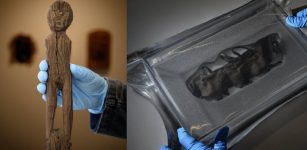 Ancient Artifacts Hidden Beneath The Ice In Danger As Glaciers Are Melting
Archaeology | Oct 19, 2020
Ancient Artifacts Hidden Beneath The Ice In Danger As Glaciers Are Melting
Archaeology | Oct 19, 2020 -
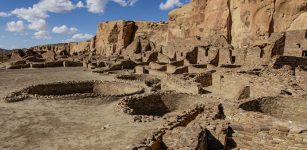 Social Tensions Among Ancient Pueblo Societies Contributed To Their Downfall – Not Only Drought
Archaeology | Apr 27, 2021
Social Tensions Among Ancient Pueblo Societies Contributed To Their Downfall – Not Only Drought
Archaeology | Apr 27, 2021 -
 Unexplained Phenomenon In East Anglia – Time Portal And Strange Glimpses From The Past – Part 1
Ancient Mysteries | May 31, 2018
Unexplained Phenomenon In East Anglia – Time Portal And Strange Glimpses From The Past – Part 1
Ancient Mysteries | May 31, 2018 -
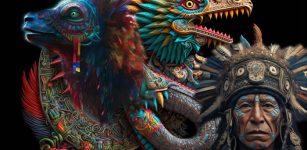 Amaru (Katari) – Powerful Inca God Who Controlled Weather Phenomena
Featured Stories | Apr 9, 2024
Amaru (Katari) – Powerful Inca God Who Controlled Weather Phenomena
Featured Stories | Apr 9, 2024 -
 Secrets Of The Two Half Crescent Moons And The Serpent People
Ancient Mysteries | Jan 23, 2020
Secrets Of The Two Half Crescent Moons And The Serpent People
Ancient Mysteries | Jan 23, 2020 -
 Is This The Face of Queen Elizabeth I?
Archaeology | Oct 15, 2018
Is This The Face of Queen Elizabeth I?
Archaeology | Oct 15, 2018 -
 Have Archaeologists Found Evidence Of A Universal Ancient Civilization That Gave Birth To All Other Cultures Across The World?
Featured Stories | Mar 13, 2025
Have Archaeologists Found Evidence Of A Universal Ancient Civilization That Gave Birth To All Other Cultures Across The World?
Featured Stories | Mar 13, 2025 -
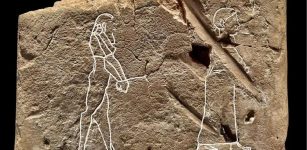 World’s Oldest Depiction Of A Ghost Discovered On 3,500-Year-Old Babylonian Tablet
Archaeology | Oct 20, 2021
World’s Oldest Depiction Of A Ghost Discovered On 3,500-Year-Old Babylonian Tablet
Archaeology | Oct 20, 2021 -
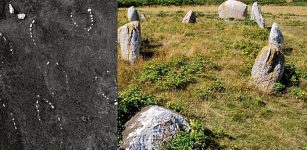 Mystery Of Viking Ship Burials In Hjarnø, Denmark And Their Unusual Design
Archaeology | Jun 1, 2021
Mystery Of Viking Ship Burials In Hjarnø, Denmark And Their Unusual Design
Archaeology | Jun 1, 2021 -
 Runic Inscription On The Viking-Age Galloway Hoard Deciphered
Archaeology | Feb 13, 2025
Runic Inscription On The Viking-Age Galloway Hoard Deciphered
Archaeology | Feb 13, 2025 -
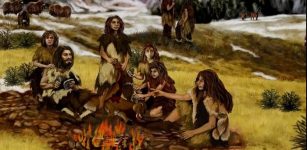 Neanderthal-Denisovan Ancestors Interbred With ‘Superarchaic’ Population 700,000 Years Ago
Archaeology | Feb 24, 2020
Neanderthal-Denisovan Ancestors Interbred With ‘Superarchaic’ Population 700,000 Years Ago
Archaeology | Feb 24, 2020 -
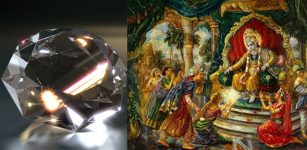 Syamantaka – Divine Jewel With Magical Powers Was A Gift From The Sun God In Hindu Mythology
Featured Stories | Mar 1, 2019
Syamantaka – Divine Jewel With Magical Powers Was A Gift From The Sun God In Hindu Mythology
Featured Stories | Mar 1, 2019 -
 Secret Tunnel Leads To Christian Chapel In Ancient Suomela Monastery In Turkey
Archaeology | Dec 27, 2017
Secret Tunnel Leads To Christian Chapel In Ancient Suomela Monastery In Turkey
Archaeology | Dec 27, 2017 -
 Mysterious Steles Of Mongolia – ‘Deer Stones’ In The Tsatsyn Ereg Necropolis
Archaeology | Jan 23, 2019
Mysterious Steles Of Mongolia – ‘Deer Stones’ In The Tsatsyn Ereg Necropolis
Archaeology | Jan 23, 2019 -
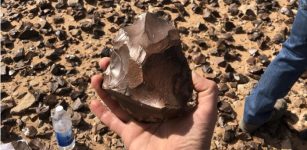 1.5-Million-Year-Old Hand Axes And Hundreds Of Ancient Artifacts Found In The Iraqi Desert
Human Beginnings | Jan 31, 2025
1.5-Million-Year-Old Hand Axes And Hundreds Of Ancient Artifacts Found In The Iraqi Desert
Human Beginnings | Jan 31, 2025 -
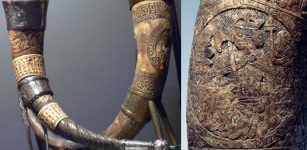 Ancient Icelandic Drinking Horn Reveals An Interesting Story About Saint-King Olaf
Ancient Traditions And Customs | Mar 29, 2017
Ancient Icelandic Drinking Horn Reveals An Interesting Story About Saint-King Olaf
Ancient Traditions And Customs | Mar 29, 2017 -
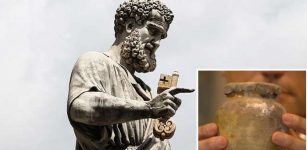 Are Bones Of Apostle Peter Hidden Inside A 1000-Year-Old Roman Church?
Archaeology | Sep 16, 2017
Are Bones Of Apostle Peter Hidden Inside A 1000-Year-Old Roman Church?
Archaeology | Sep 16, 2017 -
 On This Day In History: Brazil Was Officially Discovered – On Jan 26, 1500
News | Jan 26, 2017
On This Day In History: Brazil Was Officially Discovered – On Jan 26, 1500
News | Jan 26, 2017 -
 Michelangelo’s Hidden Secrets Under The Medici Chapel
Featured Stories | Jul 16, 2019
Michelangelo’s Hidden Secrets Under The Medici Chapel
Featured Stories | Jul 16, 2019 -
 Story Of Uncle Sam – Symbol Of The United States Government
Ancient Symbols | Apr 24, 2017
Story Of Uncle Sam – Symbol Of The United States Government
Ancient Symbols | Apr 24, 2017



